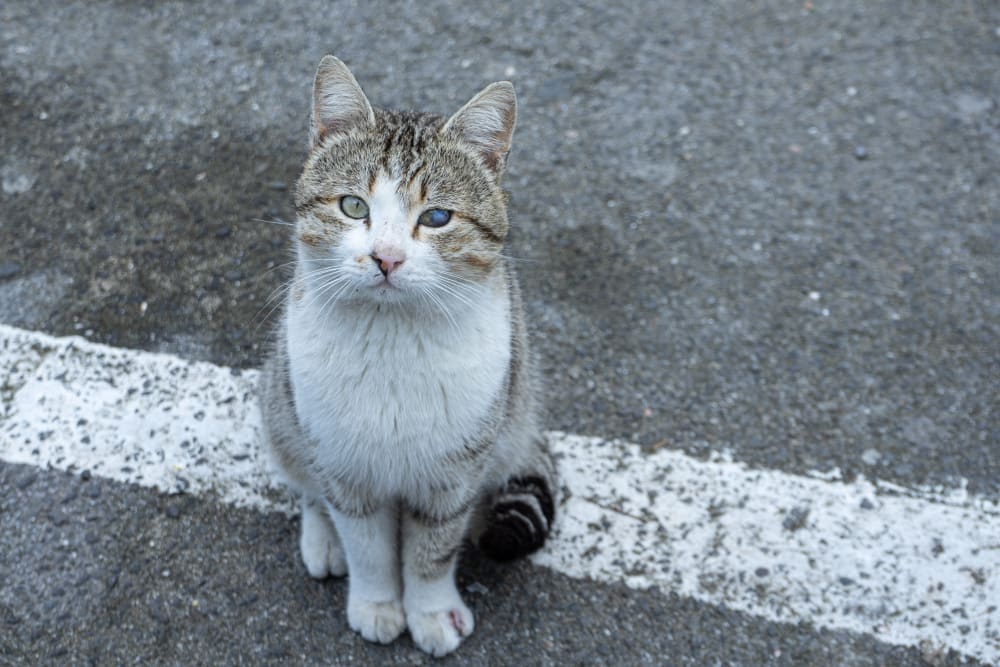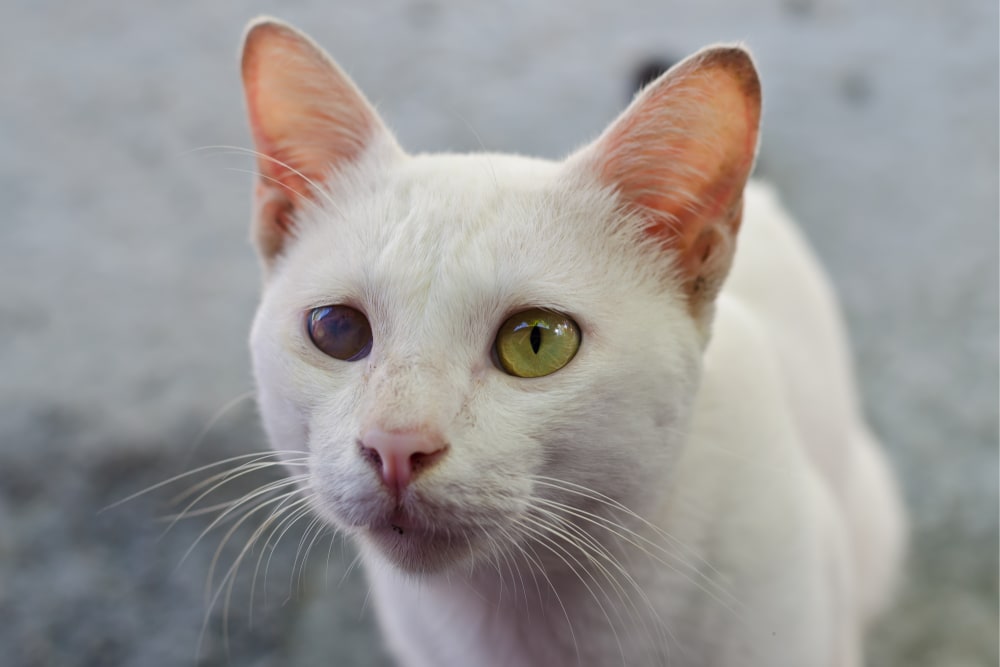Cataracts are an eye condition that can cause a distinct cloudy appearance and affect their vision. Here, our Brookhaven vets share the signs and symptoms of cataracts in cats, why they happen, and how surgery can help to restore your cat's vision.
What are cataracts in cats?
A cataract refers to an increase in the opacity of the lens of the eye. The lens, a structure within the eye composed of protein fibers encased within a capsule, is responsible for focusing light on the retina and allowing clear vision.
When a cat starts to develop a cataract, the normally clear lens develops a cloudy or opaque appearance that interferes with the ability of light to reach the retina. Depending on how severe the cataract is, it can have significant impacts on the cat’s vision.
Cataracts can affect all cats regardless of breed, age, size, or sex.
What causes a cat to develop cataracts?
There is an abundance of potential causes of cataracts in cats. They can occur with any damage that happens to the eye.
Causes of cataracts that have been described in cats include the following:
- Inflammation within the eye
- Genetic or hereditary factors
- Trauma to the eye
- Metabolic diseases, such as diabetes or high blood pressure
- Nutritional imbalances
- Radiation exposure
- Cancer
- Infections such as viral, bacterial, fungal, or protozoal
Inflammation of the eye (uveitis) is one of the most common causes of cataracts in cats. Uveitis can lead the body’s immune system to recognize the lens as a foreign material, contributing to the formation of cataracts.
What are the signs of cataracts in cats?
Cataracts have a very distinct appearance. To give you a better idea of the appearance of cataracts in cats, we have included a couple of pictures in this post. A quick internet search of 'cataracts in cats pictures' can also provide you with many more.
In many cats, cataracts can be detected early in their development, during their routine physical exam. You may not be able to see the signs of cataracts at home, because cataracts have not yet progressed to the point that they are affecting the cat’s vision.
It is important to note that not all hazy eyes are caused by cataracts. As cats age, the lens often develops a cloudy appearance due to an aging change known as nuclear sclerosis or lenticular sclerosis.


How are cataracts in cats treated?
The best treatment for cataracts is surgery. This ocular surgery involves breaking down and removing the cataract (a process known as phacoemulsification) and then replacing the lens of the eye with an artificial lens.
If your cat has significant inflammation within the eye, cataract surgery may not be an option. There are no medications at this time that can dissolve cataracts or slow their progression. This means that cataracts will persist. Fortunately, cataracts are not painful and cats typically adjust well to blindness.
What can you expect while your cat recovers from cataract surgery?
The recovery process after your cat's cataract surgery is crucial to the success of the treatment.
Your vet will likely prescribe topical medicated ointment that you will need to use on your cat's eye(s). To avoid complications like bleeding or swelling you should keep your cat in a confined space away from other pets and where they can't move around too much. They will also need a cone (e-collar or Elizabeth collar) to keep them from scratching at their eyes.
Note: The advice provided in this post is intended for informational purposes and does not constitute medical advice regarding pets. For an accurate diagnosis of your pet's condition, please make an appointment with your vet.
